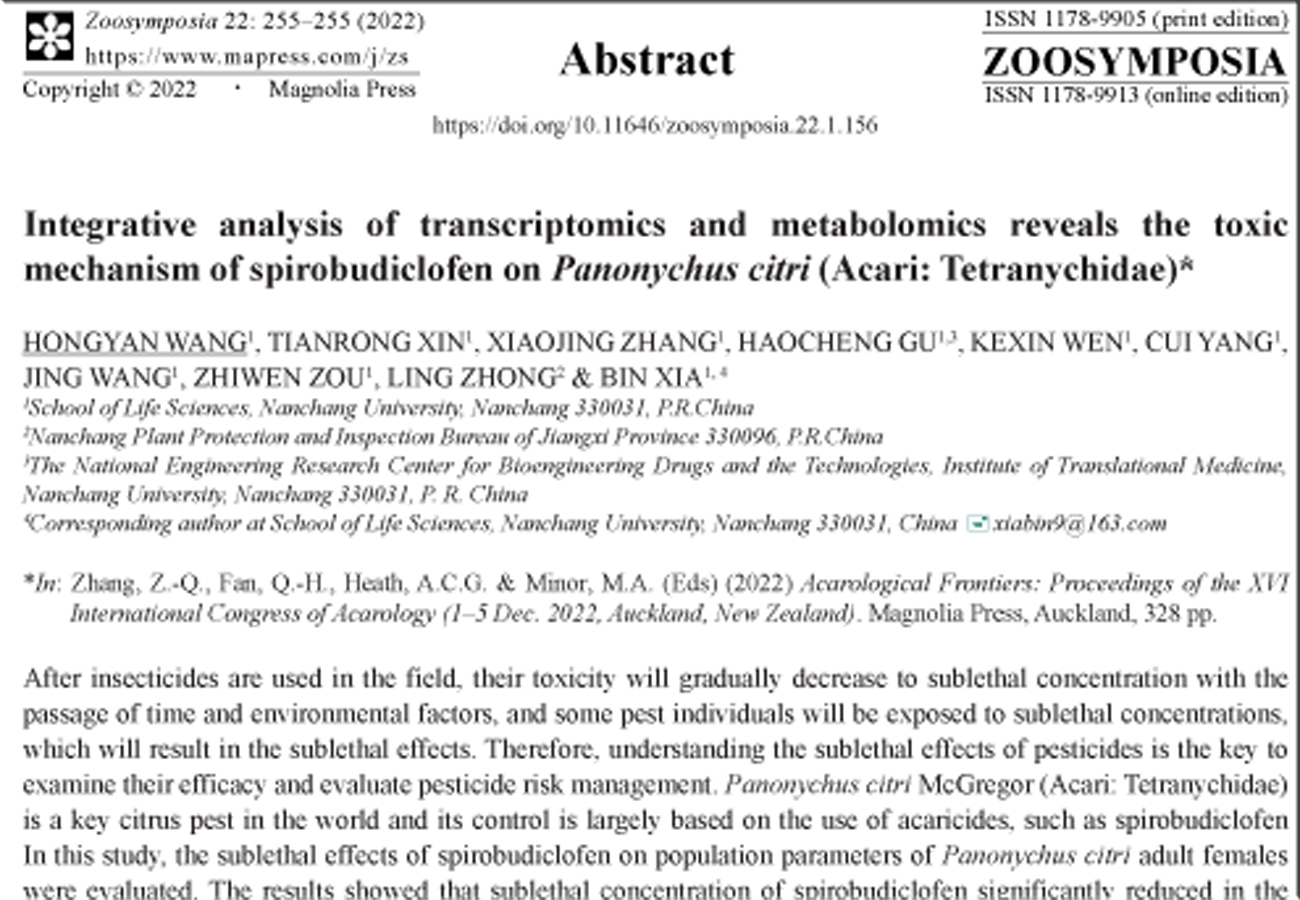Abstract
After insecticides are used in the field, their toxicity will gradually decrease to sublethal concentration with the passage of time and environmental factors, and some pest individuals will be exposed to sublethal concentrations, which will result in the sublethal effects. Therefore, understanding the sublethal effects of pesticides is the key to examine their efficacy and evaluate pesticide risk management. Panonychus citri McGregor (Acari: Tetranychidae) is a key citrus pest in the world and its control is largely based on the use of acaricides, such as spirobudiclofen In this study, the sublethal effects of spirobudiclofen on population parameters of Panonychus citri adult females were evaluated. The results showed that sublethal concentration of spirobudiclofen significantly reduced in the longevity and fecundity of female adults, and the effects increased with increasing tested concentrations (LC30, LC50). In order to characterise the spirobudiclofen molecular mechanism, the transcriptomes and metabolomics of spirobudiclofen-treated (two sublethal concentrations LC30 and LC50) and untreated adult females were compared using RNA-sequencing and LC-MS. The RNA-seq results revealed that the immune defense, antioxidative system, cuticle formation and lipid metabolic pathway of P. citri were involved in the responses to spirobudiclofen stress. Moreover, based on the disordered lipid metabolic pathways obtained from transcriptomic studies, the sublethal effects of spirobudiclofen on P. citri were examined by LC-MS; the results showed that the tolerance metabolism of P. citri exposed to spirobudiclofen was regulated by enhancing the metabolism of glycerophospholipid and glycine, serine and threonine. In the present study, transcriptomics and metabolomics-based approaches were employed to examine the molecular mechanism of spirobudiclofen-induced sublethal effects on P. citri, and the results provide new insights into the defense mechanisms at the molecular and biochemical level, and valuable information for pest control strategy development.
References
-

